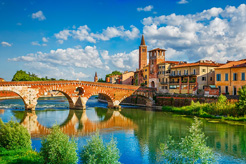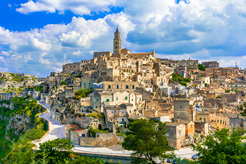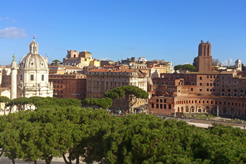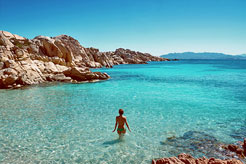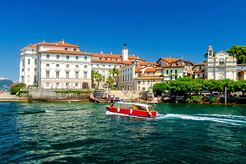- Save on package holidays in 2024/2025 with Jet2holidays
- Explore top discounted holidays & exclusive offers
- Including hotel deals, free child places & singles discount
Italy weather by month
Check out Italy weather averages by month. Compare detailed monthly climate statistics including temperature, rainfall and sunshine figures.
| Jan | Feb | Mar | Apr | May | Jun | Jul | Aug | Sep | Oct | Nov | Dec | |
|---|---|---|---|---|---|---|---|---|---|---|---|---|
| Maximum daytime temperature °C | ||||||||||||
| Hours of sunshine (daily) | ||||||||||||
| Days with some rainfall |
More about Italy
Italy by month
Jan Feb Mar Apr May Jun Jul Aug Sep Oct Nov Dec
Recommended for Italy
The climate guide for Italy (Rome) shows long term monthly weather averages processed from data supplied by CRU (University of East Anglia), the Met Office & the Netherlands Meteorological Institute. Find out more about our data sources.
Top Italy destinations
Below are average maximum temperatures at popular destinations in Italy for next month - May. Select a destination to see the climate guide for all months of the year.
- Bari
- Calabria
- Florence
- Naples
- Rome
- Tuscany
- Milan
- Sardinia
- Verona
- Italian Lakes
- Rimini
- Sicily
- Sorrento
- Venice
- Italian Riviera
Italy regions
All Italy regions
- Calabria
- Campania
- Dolomites
- Italian Alps
- Italian Lakes
- Italian Riviera
- Puglia
- Sardinia
- Sicily
- Tuscany
- Venetian Riviera
All Italy destinations
- Agrigento, Sicily
- Alghero, Sardinia
- Amalfi, Campania
- Arezzo, Tuscany
- Artimino, Tuscany
- Arzachena, Sardinia
- Assisi
- Baia Sardinia, Sardinia
- Bardolino, Italian Lakes
- Bari
- Bibione, Venetian Riviera
- Bolzano
- Cagliari, Sardinia
- Cannigione, Sardinia
- Capo Vaticano, Calabria
- Capri, Campania
- Casole d'Elsa, Tuscany
- Catania, Sicily
- Cattolica
- Cefalu, Sicily
- Cisternino
- Como, Italian Lakes
- Coreglia Antelminelli, Tuscany
- Corniglia, Italian Riviera
- Desenzano del Garda, Italian Lakes
- Enna, Sicily
- Finale Ligure, Italian Riviera
- Florence, Tuscany
- Forte dei Marmi, Tuscany
- Garda, Italian Lakes
- Gardone Riviera, Italian Lakes
- Genoa, Italian Riviera
- Giardini Naxos, Sicily
- Ischia, Campania
- Isola Rossa, Sardinia
- La Spezia, Italian Riviera
- Lake Maggiore, Italian Lakes
- Lecce
- Letojanni, Sicily
- Lido di Camaiore, Tuscany
- Lido di Jesolo, Venetian Riviera
- Limone, Italian Lakes
- Livogno
- Lucca, Tuscany
- Maiori, Campania
- Malcesine, Italian Lakes
- Manarola, Italian Riviera
- Messina, Sicily
- Mestre, Venetian Riviera
- Milan
- Milano Marittima
- Montaione, Tuscany
- Montepulciano, Tuscany
- Monterosso, Italian Riviera
- Naples, Campania
- Olbia, Sardinia
- Oliena, Sardinia
- Oristano, Sardinia
- Palau, Sardinia
- Palermo, Sicily
- Passignano
- Perugia
- Pisa, Tuscany
- Pizzo, Calabria
- Porto Cervo, Sardinia
- Porto Rafael, Sardinia
- Portofino, Italian Riviera
- Portovenere, Italian Riviera
- Positano, Campania
- Pula, Sardinia
- Rapallo, Italian Riviera
- Ravello, Campania
- Reggio di Calabria, Calabria
- Riccione
- Rimini
- Riomaggiore, Italian Riviera
- Riva del Garda, Italian Lakes
- Rome
- San Gimignano, Tuscany
- San Pantaleo, Sardinia
- San Remo, Italian Riviera
- Sant Agnello, Campania
- Santa Margherita di Pula, Sardinia
- Santa Margherita Ligure, Italian Riviera
- Santa Teresa Gallura, Sardinia
- Sarteano, Tuscany
- Sassari, Sardinia
- Sauze d'Oulx
- Sciacca, Sicily
- Siena, Tuscany
- Sirmione, Italian Lakes
- Sorrento, Campania
- Syracuse, Sicily
- Taormina, Sicily
- Trapani, Sicily
- Trieste
- Turin
- Venice, Venetian Riviera
- Vernazza, Italian Riviera
- Verona
- Viareggio, Tuscany
- Vilasimius, Sardinia
- Villamagna
- Vinci, Tuscany
Metric (°C / mm) | Imperial (°F / inches)
Italy climate overview
This southern European country forms a rugged peninsula extending into the central Mediterranean Sea. Its rich cultural history, particularly from the Renaissance period, is reflected in the many buildings and monuments that dominate most cities, not to mention the enduring remains of the Roman Empire.
The northern tip of Italy is mountainous with the Italian Alps providing spectacularly high peaks. Winters at these elevations are very cold with extensive snow decorating pretty alpine firs. In contrast summer temperatures are comfortable with thundery showers producing quite a lot of rainfall. At lower elevations there are a few scenic lakes, including Lake Garda, which is particularly beautiful and surrounded by steep forested mountainsides.
The alpine mountain rivers drain into the Po Valley in the north-east, Italy's largest lowland area. It is heavily populated and intensively cultivated with wheat and rice. Here winters can be cold and foggy with a dusting of snow, while summers are usually warm and sunny.
Running down the spine of the country are the Apennine Mountains, which fade to rolling hills down to a narrow coastal lowland strip. Citrus and olive groves flourish, as well as extensive vineyards, especially in the central regions of Tuscany and Umbria. The coast itself is a mixture of long sandy beaches, precipitous cliffs, and atmospheric Mediterranean villages.
Generally the further south you travel through Italy the less chance there is of rain in the summer months. Summers are also warmer further south and mostly sunny. However there may be periods of unusually high temperatures when warm humid air known as the 'sirocco' blows in from North Africa. Showers are possible during the rest of the year, most prevalent over southern and eastern coasts, while winters are cool.
Several large, and many small Mediterranean islands lie offshore. The two largest, Sardinia and Sicily, have mountain ranges with Sicily being home to the spectacular active volcano, Mount Etna. On the islands there are cool winters, with snow on the highest peaks, followed by long hot, dry summers. This allows little more than barren natural vegetation, although olive groves, citrus fruit, and grapevines are all cultivated.
More about Italy
Compare Italy with the USA
Below the Italy chart shows average maximum daytime temperature for Italy (Rome) and the USA (Washington).
Maximum daytime temperature (°C)
Metric (°C / mm) | Imperial (°F / inches)
Be inspired
Get your weekly fix of holiday inspiration from some of the world's best travel writers plus save on your next trip with the latest exclusive offers
We promise not to share your details
Related posts
Popular travel offers
Explore holidays in the sun for less
- Beach holidays
- Family holidays
- City breaks
- Summer holidays
- Winter sun holidays
- Holiday offers
- Top travel brands
- Airlines & flights
- Discount hotels
- Airport parking deals
- TUI
- Jet2holidays
- easyJet holidays
- Love Holidays
- British Airways
Airport parking
- Manchester Airport
- Stansted Airport
- Bristol Airport
- Luton Airport
- Birmingham Airport
- Edinburgh Airport
- Gatwick Airport
- Glasgow Airport
- Newcastle Airport
Airport lounges
- Manchester Airport
- Birmingham Airport
- Bristol Airport
- Edinburgh Airport
- Glasgow Airport
- Heathrow Airport
- Newcastle Airport
- Stansted Airport
- Gatwick Airport





























 Jet2holidays deal finder
Jet2holidays deal finder